|
On Narakachaturdashi, the ritual oil bath and cleansing, are also meant as a celebration for the heroic act of Krishna when he released 50,000 Gopis enslaved and oppressed by Narakasura ( the Dark Demon). They welcomed Krishna with diyas lit in his honour and He merged with them.
“yadA yadAhi dharmasya glAnirbhavati bharata…” starts the oft quoted line from Shrimad Bhagavad Gita. It talks about the great and virtuous people who are born on the earth from time to time and who raise the oppressed and exploited people out of their dire predicament. Why is it that a statement like “sambhavAmi yuge yuge” (and I will return in every age) follows and is that really a statement of hope? Deepavali is celebrated to honour and remember the deeds of these great people. But we must ask ourselves what do these people who have been led to a new possibility do? Why does an extraordinary person have to reappear? Why does the golden future turn to lead with unerring regularity? Let us examine the context of the Deepavali just gone by. The #Metoo seemed to reach a crescendo on FB on the days leading to Deepavali. The outrage was palpable, the hurts shared in the public forum not only allowed a collective catharsis, it reminded many people of their own traumas and insults. It put me in touch with the trauma I have faced at the hands of an obliging cousin (pun intended). This left me with grave doubts about my own sexuality as I grew up and it was much later that I understood what I had been through. Luckily for me I did not internalize the oppressor. But to some extent, I know the inner darkness such abuse creates, the belly of Narakasura that one resides in. I have listened to many women speak about the horrors of molestation they have faced: rape and the silence of internalized shame, family collusion as a powerful relative subtly forces a teenager to endure sexual oppression, lewd advances by colleagues or people in authority. The scars it leaves behind endure for a lifetime. The collusion of those who are around these powerful and ruthless people allows the violence a free reign. The ones who collude are afraid of losing prestige or a tenuous hold they have on the pipes that allow wealth to ‘flow downward’. This is what the followers do; they collude with the powerful, harm the victims with their silence and celebrate the memory of the revolutionary and the savior! They lend a helping hand as Narakasura spreads darkness into the hearts of the next million women. One of the most difficult situations I have faced in a lab happened in an insAniyat lab that I facilitated. A man in his mid 40’s trusted the process and opened up and spoke about the very deep wounds he had been dealt with through sexual abuse by an uncle. Not only were the wounds unhealed after many attempts to work through with psychotherapists, his family had treated him as a liar when he shared his trauma with them! The impunity with which the exploiters carry on is appalling. We deal with a very small number of people in labs and it takes a lot of compassion as well as skill to help the person work through feelings of shame, victimhood and hurt. The healing cannot take place through just a few encounters. It is only when the person internalizes the capability to observe the self deeply, to observe oneself from the location of a friend (sakhi bhava) and from a meditative state (sAkshi bhava) that healing can begin. The person also needs a community of others who are able to bring in this quality of listening. The internalized trauma shows up in so many ways, an inability to feel ones body, hyper-vigilance with ones emotions, deep insecurities in relationships and illness. Once this ability to listen with compassion is internalized healing begins and it will slowly transform the person. I wondered how an inner lamp of healing light could be awakened in the millions who suffer such trauma? And in the many more who collude and prevent a ‘satyagraha’ against such exploitation? It would be a Deepavali worth celebrating when the collusion stops and every act of violence and indignity is called out and addressed. It is not the victim suffering daily shame, but the perpetrator stopped in his tracks. We will then celebrate Deepavali to honour the everyday acts of valour and integrity. This is not the only story of darkness I hear these days. As I speak with people who are in the field of the helping professions or political or developmental work across the board I hear an underlying sense of futility and despair. It is also becoming very difficult to have a meaningful conversation with people on the current state of affairs. Stacked on top of the lack of real knowledge, the ‘false news’ is entrenched in prejudices. All this leads to a polarization of the discourse. So called ‘moderators’ of news channels and discussions act like flamethrowers, and the discussants gleefully take the bait. Here also I experience the manifestation of violence, intolerance and use of power. In a recent discussion I saw on u-Tube the person moderating is a well-known media figure. He continuously places binaries in front of one of discussants he has decided is the representative of the Hindu voice. However hard the person tries to get out of these (often ridiculous) binaries, and states his neutrality the moderator keeps making snide remarks. The other person in the discussion watches this drama with a smirk on her face! The whole show seemed like a set up to brow beat and cow down the scholar, who by the way came through with great dignity. It takes some careful listening to see through the provocation, the misuse of authority and the mischief in the kinds of binaries offered. This was abuse of power. In many of these discussions each side seems not only to lack respect for the other, it seems to be convinced that the other side will destroy the nation and the world. The antagonism is thick and oozing with sarcasm, contempt and veiled threat. I wonder if the viewer sees how he/she is complicit in the process? What will it take to enable the viewer to stand up and stop this kind of subtle but powerful tearing up of a ground where discourse can lead to dialogue and insight? I guess the viewer has to understand how the show they are endorsing is a reflection of their own biases and inability to enquire into reality from a compassionate and curious mind. That would be a lamp worth lighting, one that shines on ones own biases and prejudices. When one looks at the political situation across the world, this process of abuse can be seen everywhere. It screams out at us from the newspapers and news media all the time. The western powers give a fig leaf of a justification and bomb nations whose resources they wish to have an easy and cheap access to. They create blockades that put millions of people into misery. Religious leaders actively feed these wars and the oppression. Can these leaders, the hangers on who rake in the financial benefits of these violations and their followers ever be helped to see themselves in the mirror? Would a religious fanatic or an economic fundamentalist listen to anything except his echo? Is there a lamp waiting to be lit in their hearts?
1 Comment
I recently read a very nice joke, one of the rare occurrences on the whatsapp forwards. It goes some thing like this:
“You are walking down a crowded lane and holding a cup of coffee. There is some jostling, and shoving, and the coffee spills, dirtying the floor and staining your new clean white shirt. You are upset, and blame the crowds for unruly behaviour. Now if you were holding a cup of tea, the tea would have spilled all over. Life is like walking on a crowded lane, sooner or later, life will jostle and shove you, and whatever you hold in your cup will spill. The problem is not life and other people, it is the contents of your cup.” I have been rumi-nating (pun unintended) on this for a few days, and my mind veered round to the many ways in which mankind has tried to deal with this problem, namely of people holding unsavory things in their cups, jostling and spilling the stuff all over. The end result is not only a world full of all kinds of waste, the world is also full of irate people! One of the earliest ways was imposing laws and instituting punishments to ensure that people are good and orderly. There are many problems with this attempt. When one looks around, there are a minuscule number of maryada purushOttam ram type of people. On the contrary we find people in all walks of life, particularly in positions of power whose cups are filled with unmentionables. They seem to be very busy using the sceptre and crown that they wear for short periods of time to use their power in extractive, unethical and self serving ways. People in authority with beautiful cups have been very few in all of known history. Just take a look at the nuclear cocktails Trump and Kim are holding (by the way no one has spilled more of this ‘coffee’ than the US presidents) The other way that has almost an equal claim to antiquity is religion. Using the idea of god, heaven and hell religions have tried to instill goodness in people. This too has failed miserably. All through history we have examples of the most despicable use of religious authority. The dark ages and reformation and the use of the sword to spread the word of peace has been the favourite pastime of most religions. Officially sanctioned use of terror in the name of ones (only true) God still rages in our midst. The misuse of the trust the followers place on priests and cult leaders happens all the time. Stories of Shogyal Rimpoche, Ram Rahim Singh, various Bishops and so on around the world are recent examples. Their cups over flow with the blood of innocents and nonbelievers! The third way has been walking away from the world and becoming an ascetic. After 14 years of intense sAdhana (this seems to be a popular length of time from ancient times) the person returns. He (most often) is shining with light, talks of peace within and gathers a few dedicated followers. Their cups are filled with joy and bliss. This has worked for a time, especially for those touched directly by the Wise person. But, very soon the ‘teachings’ become dogma, a religion is born and a King feels honour bound to show the depth of his faith. The oasis of peace becomes the well spring of a new form of the same old coffee! Having clearly seen these failures and partial success, what do you and I do? We live in the world, lead a work-a-day existence and are part of the crowded lane! At Ritambhara we are trying to answer this question, we want to learn from all these attempts, but endeavour to experiment with a new path. We are energised by the statement made by Thich Nhath Hanh who believes that the future will be shown by sanghas that live in the world but are deeply spiritual. We are creating a platform where we will commit to an inner sAdahana, we will help each other to find our ways of acting in the world, being housewives, husbands, professionals and so on (ordinary citizens in short) while discovering a spiritual way, a path with a heart. We begin by looking at cups honestly, examining its contents, and how we keep filling it up with unfailing regularity! We find that the Mahabharata and Yoga Sutra offers a lot. These we use as guides and inspiration. Would you like to join us? The next few opportunities: Mahabharata Immersion (dates) and Antaranga Yoga - http://sumedhas.org/media/Antaranga_Yoga_Brochure.pdf I am troubled by the question “How is the psychological maturity of the person related to their ideology and values?” at the end of the insAniyat Laboratory Learning session.I am emerging from the intensity of having facilitated the lab for Barefoot Academy of Governance at the Ritambhara Ashram. Participants came from a variety of backgrounds: Corporate, NGO, Self Employed and Family Business. We used the Learning Theatre Methodology that I have pioneered, but placed the lab in the context of societal reality.
How did we explore psychological maturity? Yogacharya Krishnamacharya has said that a mature person will be able to experience the navarAsa (the 9 emotional states of being) fully and come back to a state of equanimity without experiencing blocks in the expression, nor residues after the event. We worked with this inner process through a combination of theatre, drawing and self reflection. While emotions like anger and fear were more easily expressed, though they carried with it a lot of judgement. Feelings like love were blocked in every body. Humour was evoked only in an exaggerated laughter, and wonderment was faked! The links between the inner freedom to experience a variety of emotions and ones life experiences was clear. There was no relationship between the choice of profession and the difficulty to experience the inner world, and there seemed to be a consensus on the idea that the inner world is a liability! This was surprising when one heard people in Social Work and NGO speak of inner frozenness. How did we explore ideology and values? We used a version of Augosto Boal’s methods and asked the participants to choose a drama to enact: prahlAda charitram, Romeo and Juliet, RobinHood and Trishanku. While each of these plays are situated at different stages of ones growth, they also draw out the persons answer to the questions: Who am I? what are other people like? And how do I interpret the world? The exploration of prahlAda charitram threw up the world of child molestation and the shadow sides of power. It was heart rending to hear the kinds of psychological and physical abuse some of the participants had undergone. But surprisingly, the group found it hard to see how deeply patriarchal structures of thought cause and influence this type of oppression of the vulnerable and soft (read feminine) in us. Participants in the Social Sector had views about personal power and structural power that reflected an acceptance of Male authority in blind unquestioning ways. Romeo and Juliet were the next on show. The raw passion of adolescent fantasies of heroism got played out and explored. The counterpoint positions of a Romeo wishing to break constraints and that of Tybalt wishing to shine as a role model were examined. In a strange twist to the tale, the person who enacted the Priest oversaw the murder of Juliet by giving her poison and Romeo by encouraging him to plunge his sword into his heart, all the while making pious gestures. This left the group aghast, but many came up with insights about the cruelty and cynicism that a person who has repressed and suppressed all his passions and youthful spontaneity is capable of. Protected by the mask of trustworthiness, and pretending to just be a proxy of powers greater than himself, the Priest came through as a caricature of many self serving authority figures. While the lack of humanity and lack of responsibility were clearly seen and commented upon, the systemic processes that enable and encourage this phenomenon remained opaque to the group. We went on to the Robinhood Narrative. The exploration soon became a replay of Romeo and Juliet! Though the context of the oppressed subjects was presented initially, the context was soon forgotten. The suffering subject was brought back as a helpless person who is abjectly grateful to Robinhood. Maid Marianne is also just a mindless doll. The fight between Robinhood and the Sheriff took the centre stage and soon became a contest of strength! The group dialogue that followed tended to focus on the idea of right and wrong, the underlying issues of security and survival came through and how the reasons for the confrontation soon get dwarfed in the intensity of the “battle unto death”. Why did Robinhood fight? Did he have a different idea of equity and order in his mind? Is the shift only between a foolish Sheriff who is slowly killing the goose that lays the golden eggs and a smart Robin who will be kind to the goose, engaged in an ‘enlightened self interest’ game? Is the context of the poor exploited just an excuse for Robin to test his strength? Does he have a real love for the people? We then examined the story of Trishanku. A small king, driven by envy and wishing for a heaven he does not deserve, his cunning exploitation of the competitiveness of Vishwamitra and the equanimity of Sage Vasishta in whose abode Kaamadhenu resides. The players were drawn to the exercise of power, and the nuances of the various inner states that motivate action were not easily visible through the play. The dialogue however went into a lot of depth in understanding the pathos of a person in the middle of his life who confronts an inner emptiness. The lack of substantive meaning for the future was contrasted against the one who at the end of a successful external life discovers latent potential for a heroic journey of self discovery. What is the inner work? I enjoy these intense six day laboratory learning processes and like all teachers I think I learn and discover a lot more than the participants do! I was left pondering the great difficulty people have of seeing the link between their thought patterns and the more unconscious feeling structures. The explanations, justifications and judgements of ones own (and others’) behaviour came from an ideology, the inner triggers were seldom acknowledged. Most of the inner triggers were invisible to themselves. Let me illustrate: one of the participants is a dedicated “social activist” he spends a lot of his personal income (from teaching) and almost all his time enabling underprivileged children to get an education and then tries to place them in jobs. He had been through a very hurtful rejection of his love and had experienced a lot of exclusion in his school days because of his introversion (as he sees it). He has buried himself in his work that is meaningful, ideologically sound and gives him social status. However, his relationships with people is devoid of any emotianality and he yearns for friendship and love, and the absence of it is compensated for by an obsessive engagement in social service. He counsels people who come to him with personal issues to engage themselves in a greater purpose so that their own problems seem infinitesimal!While this cycle seems very productive, it is also a process of desertification of the inner world. Enabling the participant to work towards a simultaneity of his inner and outer worlds is the core work of the lab. The direct exploration of the navarasa that we start with makes it possible for the participants to “act the withheld”. Once they have an embodied experience of the emotion, the enactment of inner turmoils becomes possible and the structures of feeling that generate ones thought and action become visible. Once the participant awakens to the inner drama, the compulsions and the yearning that one feels become more amenable to exploration. Discovering the “sakshi bhaava and sakhi bhaava” is the next challenge i.e., how do I locate myself in a compassionate and insightful observation of myself. It is in the discovery of this inner location that the healing and the recovery of ones true potential lies, as also the key to becoming the best that one can be. “I have discovered what a beautiful butterfly I can be, but to unlock this possibility I must realise my caterpillarhood” one of the participant exclaimed when she had her “Aha!” moment. sHesh prashNa- the residual questions So we are back to our initial question: “How is the psychological maturity of the person related to their ideology and values?”. I have a hypothesis that I would like to share with you and ask you to share your reflections. Most people are aware of and own up to their cognitive understanding of themselves, other people and of the world, but the actual meaning making and choice making process does not lie here. Choices such as ones career, ones life partner, ones politician, ones work place and so on happen in these inner spaces that remain invisible, but the story one builds of oneself is largely from the cognitive, and here also, “the self as a victim in a heroic struggle” seems to be the theme of the story. It takes a lot of work and a willingness to enter the spaces of frozen pain and fear, as well as spaces that are safe refuges to uncover the real processes of the psyche. In this process of exploration, the true nature of ones gifts and the dream waiting to be lived get revealed. Do the real political processes that we see playing out today reflect this “inner victim seeking a saviour” drama? Does the emotive appeal and the ability to “sell the pill” through a subtle manipulation of the unconscious that a Trump or Modi seem to have mastered mean more than logic or even self interest? Does the attractiveness of an organization lie in its ‘saviour’ like quality? How will insAniyat, true humanness emerge in our living reality? Healing. Profound. Beautiful. These were the key words of the group feedback after the Mahabarata Immersion. I am enchanted by the power of the Itihaasa-Purana, the depth of the introspection it evokes and enjoyed every minute of my facilitation of the process. The Process: The Mahabharata Immersion is a dynamic meditation. The week long process can be broadly divided into two parts: The first part introduces participants to an embodied awareness of the navarasas and the inner drama played out by one's many selves; the second part invites the participants to delve deep into their own psyches through an exploration of any of the characters from the Mahabharata. These characters are Archetypal, and an exploration of the dynamics they create between each other as the saga unfolds reveals the nature and structure of the human psyche. The traditional Therukkoothu (folk theatre) of Tamilnadu explores some of these with great power, beauty and depth. A Koothu group from Salem fostered by Harikrishnan performed the classic episode of Draupadi’s de-robing as part of the encounter that the participants experience in the programme. My wife Sashi and I had a fascinating conversation with the renowned dancer Meenakshi Cittaranjan a few years ago. She was talking about how modern living was changing the sensibilities of the young people who were learning dance from her. “Today's youngsters don't know what it means to delicately pluck a jasmine bud and make a garland out of it, they don't understand vetkam (shyness and coyness expressed in a sensuous way).” I was strongly reminded of this conversation when we were putting the participants through the initial body sensitising exercises. An activity as simple as walking seems to reveal so much of our unconscious! Perhaps because we do not pay much attention to it, the way we walk reflects the body armour we develop. Ravi Varma (our Theatre expert) started the Immersion with a bang. He got the group to practice the entry of a King through various stylised ways of walking. The participants were very energised by it. Then he introduced the entry of the Queen, evoking the feminine within. And to the surprise of the whole group, every one, including the women in the group found it difficult to experience the flow of femininity through their bodies! It made us reflect on the ways in which we internalise and embody the “yuga dharma” (the collective unconscious ground of our times). As the participants became more familiar with the basic alphabets of body awareness and expression of the navarasas, we moved into an intense exploration of some of the characters in the Mahabharata that the participants had identified deeply with. We explored Arjuna, Sahadeva, Draupadi Yudhistra, and Karna in that order. Arjuna The exploration of the Arjuna Archetype was done using the famous episode of Arjuna returning home from the swayamvara of Draupadi with his new bride only to be told by his mother Kunti that he ought to share whatever he has brought back with all his brothers. The deep anguish of both Arjuna and Draupadi in having their inner worlds shattered even as they take their first steps into a future they have dreamt of was enacted with great poignancy. Arjuna is torn between the pulls of his roles as a son, a husband and as a person. He is unable to really resolve this tension, and pleads for a compromise. One cannot flower and celebrate life in the solution that emerged in the theatrical exploration, and the inner tensions did not get resolved. The group explored the deep hurt that we inflict on each other because of the ways in which we internalise a Patriarchal Social reality. Every one becomes a victim. When the willingness to question the fundamental assumptions of the social construct, and bring in a revolutionary possibility is not entertained, one condemns oneself to live out a compromise. Two things became apparent, firstly, that the heroic struggle in Indian Mythology is placed in the context of “Dharma Sankatas”: choice making and role playing dilemmas where one has to establish a way of being that is more wholesome and enlivening to the self and others than to existing ways of being. We reflected on how difficult this is and even though we have seen many such Arjunas question societal mores and lead quiet revolutions, we continue to hold on to our heritage and traditions in moribund ways without actively questioning them. The only way for the individual to cope with this state of affairs is “public agreement and private resentment” leading to the inevitable erosion of self and society. Is this where we are as a nation today? Our religions are far from being dogmatic, but we choose to reinforce the tradition blindly. Where does this lack of vibrant questioning the status quo come from? Sahadeva Sahadeva was taken up by the next group for their exploration. The “invisibility” Sahadeva was mired in reflected in the difficulty the group experienced in finding a meaningful story to explore. The process by which one ends up sabotaging one’s own gifts and waits for the authority figures to create the context for one’s unfolding became painfully apparent. Our Sahadeva waited for bestowal and even when the space was offered, became very hesitant to assert his insights. We reflected on the tendency of most Indians to play the game of “come discover me”. And when the time comes to express and allow oneself to be discovered, a great fear of asserting oneself, of taking responsibility and claiming space takes over. Caught in the double bind of “Damned if I wait for bestowal, damned if I claim my space” the Sahadeva Archetype holds us in a space of suspended animation. In the next post, we shall inquire into Draupadi, Yudhistra, and Karna. The Mahabharata Immersion 2 was the first event that was conducted at the Ritambhara Ashram. Situated close to Kothagiri in the Nilgiris, nestled in a valley and surrounded by shola forests, the place has a natural serenity and healing energy. Sashi and I were drawn to the place and we have lovingly created a space for contemplation and inner work. We are delighted and immensely grateful that the participants spontaneously opened themselves to the energy of the Ashram and benefited from it. For a short overview of the approach to the Mahabharata Immersion: 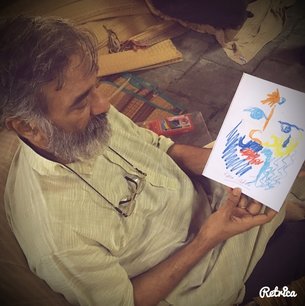 A Speaker Prepares I was surprised when Sashank called up to say “Will you speak at a TEDx event?” he and Deepti had asked me earlier if I would be interested if an opportunity came up, I had said yes, but I did not believe it would happen. So I took time to say yes to Sashank. A lot of thoughts went through my mind and I was not sure of how to respond. I had to confront two dilemmas before I developed the conviction that I could deliver the talk and that I deserved the invitation. How do I feel excited by the opportunity? And how do I resolve the demons that had been awakened? How do I mobilise myself when I have few dreams left to pursue? Many decades ago when I wrote my obituary at the end of a laboratory learning session, I had envisioned myself as a 63 year old on a spiritual path and as a teacher. I am now 66, and I have reached a stage in my life when most of my dreams have been met! My wife Sashi and I building a small meditation centre in the Nilgiris and both of us are excited and content with the idea of mentoring others on their spiritual journeys. I often coach managers on the threshold of taking up leadership positions. While many of them are competent and capable, they have never envisaged themselves in positions higher than the ones they are occupying. They have reached levels of income and status higher than their close circle of friends and relatives, and their dream has dried up. They face a great difficulty in letting go of the security they have found, the uncomfortable “comfort zone” they have carved out for themselves, and step into the unknown. I found myself in a similar position as these managers. I simply could not vizualize myself speaking at the event. 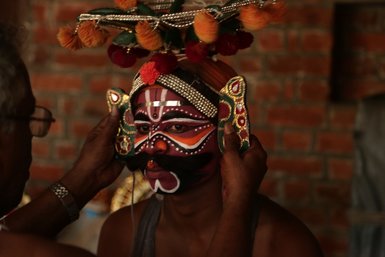 How do I resolve the storm that has got provoked by the Karna in me? Thresholds are strange animals, they are inflexion points in ones life, and they evoke both nightmares and dreams simultaneously. The invitation to the TED stage is an inflexion point. In my case, the door that was suddenly thrown open rekindled old nightmares and very few dreams! The Karna in me was awakened, I have often felt like an orphan whose real being has never been owned up. The vestiges of old wounds when I have felt denied, deprived and discriminated against were rekindled. The Karna in me has enjoyed working intimately with dalits and with the down trodden. To accept a TED talk was like accepting the affirmation of the establishment! I have always had great difficulty in accepting the Arjuna in me, a person who is loved and admired (though I had three Krishnas as my Gurus!). I have held affirmation and admiration in deep scepticism either because I often felt that my real inadequacies were not seen by these people, or I doubted their authenticity! Either way I did not have to take full responsibility for valuing my being, and that was a cozy place t be. Once more my deepest anxieties about being in the lime light, and being appreciated came up. I was beset with self doubt. My especial fear was “how will I be received?” not by people whom I don't know well, but by people who were my close to me, friends and relatives. Would I belong if I stepped out and revealed myself? And at the same time there is the yearning to be owned up for who I am. 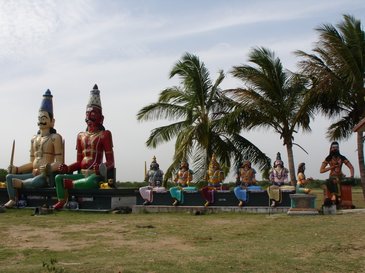 Looking back at the long road traversed At the most desperate time of my life, I had the great fortune of meeting great teachers: Jiddu Krishnamurti, Desikachar and his father Yogacharya Krishnamacharya as well as Puiln Krishna Garg. The ten years of learning and discipleship with these masters transformed me from a person on the verge of complete collapse into a viable and vibrant person with a vision for my life. Theatre and an immersion in the Mahabharata have been a constant companion in my onward journey. When I look back now, I can see a long and arduous path I have traversed and the many inflexion points I have crossed successfully. In many ways I have substantive accomplishments to speak about. I have no regrets or dissatisfaction, and no great expectations from myself either. The invitation to talk at a TED event was a delightful and disconcerting new threshold placed before me, one that I had not dreamt off. Therefore I was finding it very difficult to imagine myself giving the talk, being recorded and having the recording go up on U-Tube! In the Hindu tradition, thresholds are punctuated with rituals that have an interesting design criteria. The convergence of physical maturity and psychological maturity is dramatised through a social event and solemnised through sacred dramaturgy. Any one who has seen the whole of a Hindu marriage ritual will understand this process and the way it is dramatised. Here I was, old enough I guess, being invited to a social event that is an affirmation of ones worth, but wondering if I was inwardly deserving. 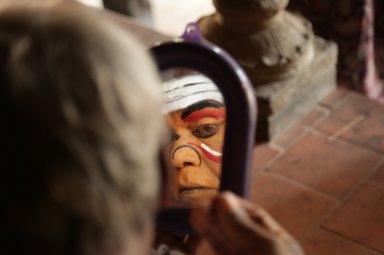 Inner work I put into practice what I preach. I stepped back, found a quiet spot inside me and let the drama of this double bind play out. I let the Karna in me and the Arjuna in me wrestle with each other, as I watched myself with great curiosity and compassion. I discovered that I was anxious about standing up and stating what stood for and who I am in a way that is irrevocable. I would rather stay with the idea of being a tragic hero than assert my being and let the world decide. I was anxious about reawakening possibilities and dreams and taking steps on my path in case I became visible and felt pulled away from the path Sashi and I are committed to. I have been doing that for very long. Saying “come discover me” to the world allowed me to withdraw at my terms. I was weary of engaging with expectations of myself and others and wanted to stroll around without any compulsions. Could I find a way of staying with the flow of things after the talk? Was I giving the talk more significance than it deserves? The internal dialogue subsided, the dramatis personae faded and the inner space opened up. I could visualise myself speaking at the event. I decided to receive the appreciation that was implicit in the invitation without resistance. 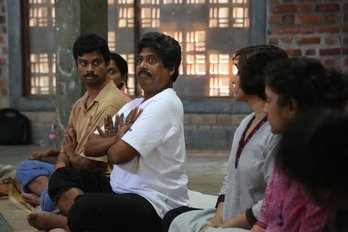 How do I sing a short tukda when I have only sung classical music? Then the next question came up: How do I do justice to the work I have been doing all my life in twenty minutes? All my labs and workshops are week long affairs, deep immersions into ones inner life, exploring the dark areas, awakening nightmares and dreams, discovering hidden potentials and healing psychic wounds. They are like an all night classical music concert starting with a slow AlApana, followed by a leisurely savouring of the main composition, improvising and playing with nuances. In the labs I am listening most of the time, I reflect on what I hear, ask questions and occasionally share insights that occur to me as we dialogue. How do I represent this work authentically, in all its seriousness and its vitality in twenty minutes of monologue? I entered the disturbance of this question fully. 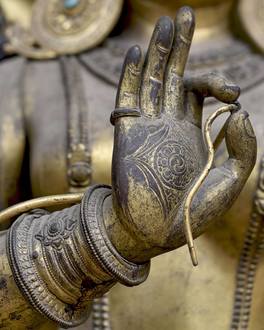 Letting go of the old and flowering I became very taciturn and withdrawn for a few days. The asana and prANAyAma practice as well as long quiet walks in the hills around my home held me gently as I pondered over these questions. Chats with friends like Sridhar (who had given a TED talk a few months ago) helped a great deal. I did the usual research into blogs and articles written on “How to give a TED talk”, how to tell a compelling story and so on. The Karna Arjuna tussle resolved itself as I let the old nightmares wash over me (hopefully never to return). I saw myself giving the talk, the core of the presentation became clear. I wrote it down in one sitting, then all that remained was to polish it. The talk would follow the key steps of the process I had just gone through:
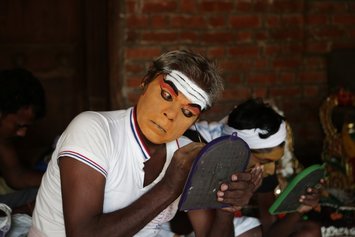 The final touch I did what some of the blogs suggested: found some arresting pictures to use in my presentation, ensured that each slide had only one message and very few words on the slide and so on. Rehearsed it with my wife Sashi, recorded myself and then started to feel stale! So I let go. Sashi and I drove down to Salem to meet Piyush Manush on the 5th of Jan and that was a delightful and inspiring day. We drove to his farm and the place he has transformed from a dry brush land into a forest. We had a lively conversation that went from the pragmatic to the mundane to the deeply philosophical and back again! It was very energising and grounding to meet a real life Arjuna, a carpenter and a designer a husband and a father; some one in love with life and fiercely committed to equity. The 6th was a quiet day, walks and desultory conversation. On the 7th I was off to Hyderabad to give the talk. In the middle of the flight I thought to myself I was being too relaxed about the whole thing and tried to do a rehearsal in my mind. I became anxious, and the more I tried to remember the more I forgot what I had planned to say. I gave up, did some prANAyAma. I go on stage I was very composed when I got to the venue. The first speaker was Dr Mishra, one of the first women in the Police force. I was very impressed with her work, we need more officers like this for our country to evolve and grow. Bhanu Prasad a 17 year old math prodigy went next, he did his race against the calculator and won hands down, a few more impressive feats, and then it was my turn. As I went on stage, I was given the lapel mike. I was zoning in, and a thought flashed in my mind “am I getting the mike positioned right?”, but before I could test it (and the organizers just said OK) I was on. I looked up, and the flood lights were dazzling. I was in the lime light, and all I could see was a dark space with shadowy outlines of people! I love making light hearted and playful exchanges with the groups I work with (mostly small groups of 25 people or less) and here I was in the spot-light and all around me was darkness. So I spoke into the darkness and slowly my eyes adjusted and I could make out some faces. As I spoke, the rhythm came in, and for one who is used to the Test match format of a five-day game, the twenty-twenty became a delightful challenge. I did feel that I was able to touch some thing authentic in me and connect with the group mind from time to time. It was over in a flash, minor disturbances as I was on stage did not dislocate me (and there were a few). As I came back to my seat, I felt I had done a decent job, I gave myself a 4/5 rating, and enjoyed the rest of the day. Sai.. spoke after me on overcoming disability. A real hero who has accomplished incredible feats that others more fully endowed would feel proud of having just attempted! His lively and humorous talk was like an illustration of what I had just spoken about. I would like to see the final product that goes on the web, but I a feel a little distant from it. I hope it comes out well though. Here is the talk I hope you like it! https://www.youtube.com/watch?v=zWP0OMXYcwk I have been ruminating about my experience of working with the Brahma Kumaris during two of their events: the SPRIT Summit: Leadership 2.0 in Chennai and the three day Leadership 2.0 Seminar in Mt Abu. Several things about the organization fascinate me. I have also been reading a lot of papers and programme offerings that talk about the VUCA world and how we need to prepare for leadership in this disruptive and uncertain world. The two approaches are diametrically opposite, therefore my attempt to try and explore them further. The blog written by my colleague and friend (and co-author of the book Organization Development and Alignment) added grist to the mill. (https://gagandeep.org/2016/09/17/wasting-away-in-the-vuca-world/)
The idea of treating the world as antagonistic to mankind, and having to battle it out and extract what one needs from it is the cause of the predicament we are in: Climate Change, Environmental Destruction, Wars for control of oil and other resources, Financial Systems that are fundamentally exploitative and so on. The dominant idea of management and leadership we now take for granted has been derived from the study of military conquests. It has enabled a colonizing idea of organizations. The present VUCA model is also a military model, one that has been developed in response to terrorism and urban warfare. Will the ideas that come from a system whose main goal is to identify and destroy the enemy be meaningful at a time when we have to find a very different approach to the use of resources from the ones that have served us so far? The way the Brahma Kumaris work seemed to be an alternative worth examining. Firstly, it is headed by women, secondly, most of the work is done by volunteers and thirdly, their offerings work seamlessly. Now you will ask, but are they not a spiritual organization? As though that is a disqualification for being a model for business organizations to learn from. Can we ask ourselves why is a military organization focused on the currency of death and destruction a worth while model? And, why is one that is focused on life and creativity not a worthy model? By the way, very few Hotels in the world run seminars every week where a few thousand people (some times up to 20,000) are hosted with love, care and very high efficiency! This is the norm for the Brahma Kumaris. I saw two sets of tripods underpinning the work of Brahma Kumaris (BK): firstly, an old Indian idea of organization design that says an organization must answers the imperatives of Dharmam, Dandam and Mukti. The second a convergence of three kinds of minds, the Humanistic mind, the Spiritual mind and the Scientific mind. The first tripod: the first imperative of this tripod, namely Dharmam says that the ways of engagements of its members with each other and its environment must ensure the growth and well being of all its constituents as well as the environment that it lives in. The second imperative, Dandam ensures that the rules, policies and processes that govern the organization are fair and equitable and that its members respect them. The third imperative, Mukti ensures that every member of the organization can aspire for and work towards their own individual emancipation and development. If I look at the BK experience, every BK member I met and had a dialogue with was clear that they were working for world peace. They would narrate stories and anecdotes that illustrated their commitment to this overarching principle. The voluntary adherence to what the BK’s referred to as ‘seva’ was at the core of their efficiency, and flawless service. “There are no tasks to be preformed under duress” BK Bala Kishore explained to me “there is seva to be rendered and each one knows their part in the overall scheme of things”. Work in the kitchen starts at 330 AM every morning and finishes at 1030PM! And the whole process is undertaken as a spiritual journey, the Mukti that each one seeks is an essential “reason for being” of the organization. The other tripod that I mentioned was the convergence of three kinds of minds: the Spiritual mind, the Humanistic mind and the Scientific mind. The BK’s work and the way they explain the basics of the spiritual practice is backed by an understanding of scientific advances in the field of neurobiology, phisiology, medicine and the like. The spiritual practice is founded on a very human and compassionate way of relating to their own members and to their guests. In their service delivery they use modern technology and good management practices. They are very adept at deploying local radio for communicating to the people in the area, and are leaders in the use of solar power. They run a very successful hospital where one senses an atmosphere of happiness and positivity (apart from the obvious cleanliness and efficiency of the place). Most BK members hold down jobs while they volunteer their seva for running the various BK Centres. Therefore the Leadership model they were talking about as Leadership 2.0 was there for people to experience. The convergence of the energies of both the tripods was clearly in evidence. The feminine energy was at the heart of the process and its commitment to humanity, intelligence served this energy, and profound respect for every person in the organization ensured collaborative task performance. As far the VUCA issue is concerned, the preceptor of the organization Brahma Baba, was a very successful and wealthy jeweler in Sind. He not only gave away all his wealth to the idea of creating this organization based on his insight and vision, he had to abandon his home and come away to Mt Abu when India became Independent and the horrors of the partition were unleashed. The organization was set up and it grew during some of the most tumultuous changes seen in recent times. Few people realise that India has been in the throes of three fundamental changes simultaneously- 1. the change from being a colony with a repressive and feudal governance structure to becoming a democratic republic; 2. from being a largely rural nation to becoming more and more of an urban nation that is a significant part of a global network and 3. from being largely agricultural economy to becoming industrial economy pushing the post-industrial frontiers. VUCA before the term was coined! It not only grew in India, it has flourished all across the globe, so it is Multinational as well. One has to ask the question is the world like the one seen through the eyes of a uniformed soldier, or is it like the world seen through the eyes of a person devoted to service? To a soldier, vigilance and readiness to attack are key to survival. The world is essentially antagonistic and dangerous. To the one looking to serve, enhancing well being by offering their best is the reason for being. The world is essentially one where mutuality and sharing underpin its existence. Perhaps the world is not entirely one or the other, but I would like to live in a world a pharmaceutical, or a food company sees me as a friend to be nurtured than as a prey to be hunted, or as a statistic in their push for market dominance! May be, just maybe, the BK model has as much merit (or more)than the hyper-masculine ideas being offered as the way to confront VUCA. A very disturbing trend that is catching on is the valorization of the competitive and self centered ways of individual acquisitiveness as the underlying philosophy of human progress. According to this narrative, Capitalism is the natural outcome of this drive in man to conquer Nature. Nothing is further from the truth. In the thousands of years that it has taken for man to evolve, 99% of the time has been spent in communities of mutuality and sharing, in maternal care and in the lap of nature. Today's crises are the outcome of ideas that are based on individuality and consumerism, parochial national identities and wealth acquisition, market fundamentalism and extraction. The way out cannot be “more-intensely-the-same-paradigm”. The short lived masculine and antagonistic ideas of man and the world have to give way to a more inclusive, feminine and compassionate idea, the one that has nurtured us for most of our evolutionary journey. My work as a behavioural Scientist and a Yoga Mentor offers me a unique location from which to observe how people experience themselves and their communities. I mostly faciltate laboratory learning groups where very intimate conversations based on self disclosure is the basis of the learning. Let me take you through two anecdotes which represent a large trend.
First, the struggles of a person with low self–worth. Lets call the person S. S is a talented person, and when she shared her story, it was replete with instances of parental contempt for her dark skin. She had internalised a sense of stigma around her looks (by the way she had deep sensitives eyes that were charming). S had got into a cycle of seeking affirmation and acceptance from people, she would over compensate for her ‘stigma’ and use her talents to be accepted and praised. S could be manipulated easily, and was struggling with deep hurt at having been “used and discarded” by men. She was waking up to the fact that her need to be loved “inspite of her stigma” was getting her caught in a negative cycle where even a slight rejection (some thing that any one would face) was converted into a replay of stigmatization and she would compensate by offering herself even more and in a ‘needy’ way. She was angry and in rage with the way people treated her, but this rage became self-hate, as she was unable to say to herself “I am beautiful and worthy”. It took a lot of ‘work’ from the group to help her locate herself in her inner qualities, her talents and recreate for herself a story that was meaningful. Interestingly, the more she was able to do this, the more her posture changed, her language changed and she was able assert herself when she felt her boundaries were not respected. Second, the struggles of a person who has internalised a shame of belonging. Lets call this person R. R is a brahmin. R is bright, well read and sucessful, received the best education India can offer (IIT and IIM). In his presentation of himself one was struck by two things: firstly, a narrative that had very few references to context and family. We call this the “swayambhu” identity. “I am self-made, I have made it inspite of….”. This is very self reinforcing. R was competetive, suave and very conscious of managing his boundaries. Secondly, one would see him indulge in a peculiar variety of self-condemnation, he would deride things Indian, be very cynical of our country and so on. As the lab progressed, it became very clear that his primary angst was with his belonging to the Brahmin community. He was especially hostile to a co-participant who wore his “Iyengar Namam” proudly. At one point the group was dismayed by this discordant behaviour of R and confronted him with their assessment: many of the qualities R possesed were fine ‘brahmin’ qualities! Namely, a very deep commitment to knowledge and enquiry almost like a scientist, great self discipline, a dignified way of maintaining warmth and distance. R was very concerned with the underpriviliged and engaged in a lot of work with the ‘unreached’ as he called them. But, the seemingly discordant reality baffled the group and R himself. A lot of ‘work’ happens on the sidelines of the lab, late night ‘addas’ that swing between ‘jokes and song’ sessions, and intense debates and discussions. R became toubled when he found himself joining the group in its joking sessions one evening being particularly drawn to jokes about the “Bihari brahmins” and horrified at “Sardarji” jokes. He brought this observation back to the group during the lab session, and we discovered how deeply he has internalised meanings about his community and sanskritization and so on from others. He was sent to an elite school even though his parents were not very wealthy, he enjoyed music, learnt carnatic music but later switched to learning the guitar since it was more ‘modern’. His reading was leftist and so on. While listening to others in the group speak about their struggles with their parents and life events, it became clear to R that the very qualities he held in contempt were the ones his parents valued and therefore provided him with the ground on which he grew. As R explored further, others found resonances in his sharing of his reality, their own understanding of the communities they belong to was not based on how they had experienced it, but on the basis of how it was criticised by others. As we enquired further into this pheneomenon it became clear that many of us have a very personal and often a warm experience of the way our communities come to gether, celebrate festivals and losses. We like the freedom that our parents have given us especially in matters of belief. We actually enjoyed the stories our grand mothers told us. It turned out that in a subtle way R in particular and many of us in the group (to a lesser extent) try to be modern by actively removing aspects of behaviour or demeanour that we think are stereotypical of our community. Often as a reaction to being shamed as it turns out in R’s case, by the elite teachers and students of his school. We replace the ways of our culture by taking on the mask of the modern. And worse still, in order to scrub off all vestiges of our belonging we take on the “outside/ other” location and critique ourselves and our loved ones. This sets up a very peculiar dynamic. On the surface all is well, one is sucessful popular and so on. But deep inside, we are not only lonely, we start to hate many things that are part of us, part of what we enjoy, part of what makes us grow roots and nurture others. R in particular had married ‘out of his caste’ only to discover that it was an act of defiance and not a positive choice, one more attempt to distane himself from his belonging. R recognised the negative cycle he was perpetuating and in a sense building a “sucessful” but bleak and desolate future for himself: wanting to become the “other”, take on the masks of the other, be critical of ones roots based on the frame works of the “other”; feel inauthentic and hollow, feel lonely, attribute these lacunae to ones belonging and try harder to win the acceptance of the “other”. This often makes the R’s of the world ripe to be co-opted by forces inimical to our evolution and growth. Through the exploration and the dialogue that ensued in the group, R and others experienced a catharsis and a breakthrough. They realised that their own concern with the negatives that had been internalized in their communities could be a great resource. Being contemporary and being modern are two very different things. It is not necessary to be self condemnatory, it behoves us to deploy our maturity and learning to engage with our context of belonging, bring in a realistic appraisal of the functional and dysfunctional aspects of it, reframe its values and strengths in a contemprary understanding and dignify it; enable all who belong to flower with pride, grow and evolve. When the group came to this point, it realised how wrong many of the criticism they parroted were and how their own intelligence directed them to other aspects of their community that need examination. The frames they were using drawn from western/ marxist thinkers were not only biased and motivated, they were coloured by the particular histories and beliefs and traditions of those people. The methods and tools may be valuabe in of themselves, but the meaning that was drawn was deeply flawed, the lens was conditioned by the particular communities/ traditions that the so called “experts” belonged to. And in some cases, the particular pathologies of the commentator. The hate for ones belonging is more subtle to get in touch with than self-hate. However, it is probably just as corrosive. It makes one fragment oneself, and waste energy in a kind of vigilance against oneself “lest my brahminhood shows up” (in R’s case). It makes one act like a Don Quixote raging at windmills defined by “alien frames” as demons. R and the group concluded that this fragmenting of oneself is very depleting and will ultimately lead to illness since one is always in deep conflict and using all ones energy to become some thing one is not. Finally, will the ‘other’ ever accept one as their own? They are after all celebrating their belonging and their superiority. They will welcome ones willness to fight for them, but it will be on their terms and for their motivations. When I turn my eyes to the battles being fought today: “the Battle for Sanskrit”, the battle for an authentic history of India, a battle to define growth and development in our terms and engaged with through our genius, I start to wonder how much of the polarization and fight that surrounds these laudable initiatives, the noise that drowns the signals comes from self hate and hate of ones belonging? The S’s and R’s of our world getting caught with the cacophony and missing the opportuinity to work constructively. While the origins of the enquiry for each of these areas of concern comes from a well intentioned and often a well researched study, the media and vested interests crank up the shrill cacophony. One side will spew self-hate, and the other will defend through self glorification. A Barkha Dutt will write a cynical mail to Smriti Irani, as though she is a “swayambhu” and her family is not “patriarcal” or her claim to uniqueness is not a counter-location forever in opposition and therefore forever dependent upon the very “patriarchy” she rails against. A Shri Shri Ravishankar or Sadguru will be reviled by activists, as though rebellion is a creative act. The recent Magasaysay award, its citation and the fierce debates around it are another example of the frames of interpretation of our reality and the exploitation of the situation. Dharma is established and a dharmic ground or dharmakshetra is nurtured with care and compassion. This process requires positives and negatives assessed from inner confidence, contextual relevance determined from ones own location, honest self-appraisal, self-reliance and valuing of ones subjectivity in the face of decision making, honest self-reflectivity and introspection which become the foundation of thinking, feeling and action i.e., healthy self worth and positive self regard. It becomes more and more important for us to engage in intense dialogues taking place today standing on a dharmakshetra, but the space for such dialogue is threatened by shrill polarised voices, the S’s and R’s who do not care to understand themselves I have been pondering about the news that has been been making its rounds recently, namely Brexit and the US elections. On the heels of this comes the damning evidence about the Iraq war, and how decisions were taken that led to so much suffering for an already beleagured people, and probably fueled terrorism. What constitutes Dharmic Leadership? What kind of leadership is demonstrated in these dramas that unfold on the world stage? Are they Dharmic? To answer this question let us briefly examine the idea of Dharma. Actions that either regenerate that which has fallen, reinstate that which is falling or replenish that which is standing is called Dharmic action. Another related idea states that actions that simultaneously enlivens me, you and our context is Dharmic. The kind of debate leading up to Brexit or the ones that are now on show in the US are clearly not dharmic. Why? For a very simple reason, they are profoudly polarizing. A simple yes/ no binary can not uphold Dharma. Nor can human impact of a Brexit or the US election be determined only by the people of that country. Take the US election for instance. The primary discourse is around the question “how do we sustain/ improve the American way of life?” Trump says “recreate its greatness”. If you have not already done so watch It will be obvious to you when you watch this documentary that the American way of life costs the earth an awful lot! Yet, this will never be part of the discourse, nor will the questions regarding the American way of life and its consequences on its own people and their happiness. The debate, (and it was a debate not dialogue, not a process of meaningful enquiry) for and against Brexit descended into xenophobic emotional manipulation.
For a discovery of what is dharmic, one has to listen to many voices, the ones directly inside the issue as well as ones that will be impacted by the way the issue is resolved. This listening and deep concern for what these voices are reflecting leads to a “dharma sankata”: a decision making double bind where there is a price to be paid whatever decision is arrived at. The only way out of the dilemma is to discover a larger shared meaning where the voices cohere and converge. There seems to be no leader in the horizon, nor a process that can ensure the emergence of a truly human and global mind. And, clearly we are dealing with decisions that profoundly and often irreversibly impact the world and all of humanity. The Iraq war was decided on the idea of “energy security” of the US of A and its allies. Evidence seems to have been concocted about the weapons of mass destruction and the public lied to. This is clearly criminal, not even just Adharmic! It provokes anxiety and helplessness when we see that all the issues that now confront human beings are global issues and there is no serious dialogue that is holistic: global warming, depletion of resources, terrorism and so on. Thinking that is fragmented and divisive causes all of them. Worse still is that the fragments that think in this way see the “whole” either as an evil to be destroyed, or as a resource to plunder! The so-called ‘Leaders’ of these fragments pander to the narrow self-interest or emotional motivations of their followers. When they appear in global forums they are grandstanding to their own support base. Our Wisdom Tradition Vikramaditya was a mythical king whose dharmic conduct is idealized and exemplified through many stories. The most popular ones are the “Vikramadiya and Vetal” and the story of Bhoja Raja’s attempt to ascend the throne of Vikramaditya. What is interesting about the Vetal stories is that they are all double binds. Vikramaditya is placed at the centre of a double bind when the puzzle which is also a double bind is put to him: if he knows the answer and does not speak, his head will burst into a thousand pieces, and if he does, the vetal will go back to the top of the tall tree from which Vikramaditya fetched it to start with. The stories that Bhoja is confronted with when he tries to ascend the throne are of the greatness of Vikramaditya. They are not stories of war, but are stories that illustrate the genuine concern Vikramaditya showed to others and the whole kingdom, his anchorage in dharma not his problem solving capability. Through explicating the nature and structure of a double bind, and the insightful nature of thought required in solving them these wisdom stories were used to train leaders. A dharma sankata is a double bind that has profound implications for many human beings. Understanding an issue from a holistic perspective is fundamental to recognizing the dharma sankata. Personal integrity and a capacity for contemplative enquiry are necessary prerequisites to engage with a dharma snakata. When the whole is not understood, where is the question of dharma? When ‘Leaders’ focus on manipulating opinion to grab power, how can a Dharmic leader emerge? When religions are vying to harvest souls, who will teach real dharma? The way forward? We have probably exhausted all existing human capabilities to manage the dangerous effects of our own recent advances in thinking. Our ability to convert scientific discoveries into weapons or war or consumer goods in greater quantity than life enhancing products has brought us to this point. Inner development where a large percentage of people understand global issues and are concerned about humanity lags behind. The hope for the future lies in mindful and simple living as well as the use of education to enlarge people’s minds and hearts. Divisive thinking and action must end. There are no national and sectarian problems to solve any more. I was facilitating a day long “Learning Dialogue” on the relevance of the Pandava archetypes in our world today centered around my book “Leadership Dharma, Arjuna the Timeless Metaphor” (http://www.raghuananthanarayanan.com/books.html).
“What is the relevance of the Pandava heroes and entrepreneurship?” a young participant wanted to know. More than half of the group comprised of young people and they were all very keen on discussing this question. I am sharing with you some of the key ideas that came up. But firstly, you must understand that we are speaking about personas within us in an idealized form so that the discussion leads to introspection and action in our lives. The intent is not to have a theoretical discussion about mythical characters. “Bhima with his restlessness and courage has to be the one who initiates new adventures” our young friend began the discussion. “He is the one who is moved by passion. He is willing to act in the face of danger, in fact, danger evokes him and brings out the best in him.” “Does he think through before acting?” was a question that engaged the group at this point in time. After looking at their own experiences, the group concluded that the ability to act first enter areas that others would think twice about venturing into was the defining characteristic of entrepreneurship. Bhima’s ability to inspire heroism and followership was seen as a great asset in the early days of a start up. The group then looked at what makes the start-up grow. “I guess the ability to create a team that is close knit and well bonded is a prime requisite to create a stable core.” “Well that requires the Nakula to come forward and hold the team together.” “I think I am a Nakula, and I have found Bhimas very difficult to work with. They keep extolling their strengths and are contemptuous of weaknesses. Trust is the glue that binds teams. The way each team member values the strengths of others is important, but how each team member holds the weaknesses and lacunae of the team-mates is crucial to creating a great team.” The Bhimas in the group fell silent for a few minutes. “Yes, I have felt lonely and anxious when I have had to face my lacunae. The worst thing that has happened to me when I felt weak was to be shamed for some thing that is a limitation.” “I am not suggesting that one indulges in self pity or in self deception, there is a time for action and a time for reflection and rejuvenation,” the Nakula offered. “When this balance is lost and the reciprocity of valuing is absent the group becomes brittle.” It was settled that the ability of Bhima and Nakula to work together was crucial to the process of building the team and holding the team together in tough times. “Soon we will need the solidity of a Yudhistra” “But what will he do? He is the boring administrator” this was a true Bhima speaking! “But, without the Yudhistra you Bhimas will gain territory without consolidation! The lesser-known side of Genghis Khan was his administrative brilliance? The moment he captured a city or a town he would make sure that a just administration was in place and laws were respected.” “Yes, come to think of it, Alexander never consolidated his gains the way the Mongols did” the Bhimas conceded. “Whether I like it or not, once I capture the market, I have to learn how to govern it, give space to and empower the ones who will ensure predictability and scalability.” “Let us see where Sahadeva fits in.” “He is the knowledge-builder is he not? So without him, one will not be able to create a knowledge bank and therefore, the future capability of the organization belongs to him.” “Yes, but, Sahadevas are not very action oriented and tend to procrastinate action till they are sure, so a Bhima will either get impatient with them, or tend to dismiss them as mere thinkers compared to the doers.” “I guess that's where the Nakula energy becomes key to creating a context for collaboration and mutual valuing.” “That makes sense, because, the Sahadeva can also be dismissive of the Bhima as some one who is driven by emotion and incapable of careful deliberation. He will simply withdraw into a shell.” “Where does an Arjuna fit into to all this?” Here the group went down many false trails. One strong idea was that Arjuna was the one full of focus, or that he listened to the words of the elders. When it was pointed out that narrow focus without perspective is a recipe for disaster the group went into a discussion about focus. A consensus was arrived at “focus in this context is the ability to persist with the dream and the chosen direction even when the current challenges become all absorbing.” I then had to place before the group the question “If an entrepreneur is entering a new field, can she find a mentor? What will she seek advice for?” After some fierce argument and some divergent thinking the idea that seemed to make sense was “An entrepreneur walks a new path so the final dialogue she has to have is with her own deeper self. She must trust her intuition, dig deep to find inner potentials that she has not deployed so far, and above all trust ones own judgment act with intensity.” “So, the Krishna she seeks is within” they concluded. At this point, I again asked a few key questions: “What made the battle ground (Kurukshetra) a ground where matters of Dharma were at stake (Dharmakshetra)? Why did Arjuna stop the war and ask fundamental questions? And why did he go through all the psychosomatic symptoms of stress at this point?” Discussing these questions was not easy, each of the participants had to delve deep within themselves to explore them. One of the participants who had gone through a difficult turn around situation in her organization some time back came up with a perspective “Organizations tend to forget basic questions like why they exist? What was the founding vision? What are the core values that have enlivened them? They get bogged down either in firefighting or in adhering to systems and policies. At this point it is important for an Arjuna to appear and ask fundamental questions. In doing what we are doing, what are we really doing? Why are we in business? Should we remain in this business and so on. These are paradigm shifting questions and shake the ground which most of us take for granted.” “Ah! So he is an entrepreneur too, but one who shifts the foundations” “And when one stops the whole system to ask these questions for which there are no ready-made answers, one has to bring oneself in completely and stake oneself both in the asking of questions for which one does not have answers and in searching for the answers in the context of a crisis.” “That is very difficult because it is stressful, and it is personal too.” “Yes, that's why deep personal integrity, and the ability to take on the stress and the anxiety of the group is important. If you remember, a Sthita Pragnya is described as one who can comprehend the whole situation and all its positive and negative dimensions without getting dislocated from the larger meaning purpose of the mission.” When I googled Kanhaiya, I found only two prominent references: One to Kishen Kanhaiya, a movie and the other to Kanhaiya Kumar. Once upon a time, long long ago there was another Kanhaiya- the one who is an avatar of Vishnu. I wondered about him and the relevance of these (and other Kanhaiyas) to the idea of Nation Building. The First Nations of America seem to have held a notion of a nation: “a space where every member of the nation can act with honour and live in peace”. I like this idea. When Google threw up Kishen Kanhaiya the movie, it struck me that we need to add “and have fun” to this simple list. I am going to treat all these Kanhaiyas as metaphors. Shri Krishna (the original Kanhaiya) is the metaphor of a Nation defined by its Dharma, Kishen is the metaphor of a Nation defined by mundane pragmatism and, Kumar is the metaphor of a Nation defined by leftist ideology. There are many more definitions but let us begin by examining these three. Mridula Mukherjee in her speech at JNU (Lecture on National # 8- Mridula Mukherjee- Published on Feb 28, 2016) defines the Nation. The myth of origin starts with Ram Mohun Roy and his idea of civil liberty. It then proceeds to bring in Tilak and Gandhiji and so on. In her talk she refers to spontaneous uprisings of the ordinary people of India as though the evocation to protest for ones liberty, to protest oppression had suddenly descended on India. The spirit of the nation that “JNU has been chosen to stand up for” is leftist and modern; a creation of the British and our struggle for independence. So, what is the new JNU formulation of Nationhood really doing? It alludes to the idea that India was born in 1947, all narratives of nationhood should start from there. The idea of civil liberties is presented as a leftist ground, and all other narratives are to be interrogated or fought! The History of protest against oppression using peaceful means of non-cooperation called hartal has been recorded in our history many times. (http://ppstbulletins.blogspot.in/2011/10/note-on-disruption-and-disorganisation.html). Gandhiji seems to have drawn heavily on this cultural heritage. There is evidence to suggest that Gandhiji understood the institution of the Kumbh Mela and used this ancient process to disseminate his ideas of a Nation, and the need to stand up against the British. Many of the Akkadas had taken part in the 1857 struggle too. Also, both Tilak and Gandhiji relied on their understanding of the Gita and other ancient texts to formulate the idea of Bharat. The vernacular press that Ms Mukherjee eulogizes still refers to our Nation as Bharat. I wonder whether any acceptance of our Vedic heritage has a relevance to Nation building, or will it be dismissed as “rightist”? We also know that a strong theme that dominated the Muslim mind in the pre-independence struggle was the idea of the Caliphate, a religious Ummah. This too is an idea of Nationhood, albeit one founded on a religio-political imagination. In its most compassionate and ideal form, the covenants that the Prophet entered into with Christian groups in Sainai and other places defines the conditions under which such a nation nation would function. Its citizens would be given the opportunity to “act with honour and live in peace” so long as they accepted the primacy of the Muslim religion. This idea of the Ummah underpin the Daesh / ISIS today, and displays the most brutal opposite of the behaviours recommended in the covenants! The religio-political “Christendom” was the notion that evoked Europe to fight the crusades. The ideas like “Ram Janma Bhoomi” address themselves to this form of Nationhood. Was Ambedkars idea of a nation based on the Buddhist tenets, did he see the the Ashokan Empire as its golden period? Is Hindutva a home grown version of Christendom and the Caliphate? Was Tibet a compassionate form of this idea? In my fantasy, the average Indian who enjoys Bollywood is the subaltern who fills the streets when his idea of liberty is impacted. He watches the Ramayana and the Mahabharata as well as Kishen Kanhaiya, and in his own way, understands the dialogue that refers to an Arjuna or a Shakuni as jargon that allude to a whole universe in a conversation/ dialogue. He/she has a continuity of cultural imprint that underpinned the hartal of Banares. A whole town of residents spontaneously steeped out of their homes, congregated in a huge maidan to protest British policies (they were protesting the imposition of property taxes by the British in the early 1800’s- http://ppstbulletins.blogspot.in/2011/10/note-on-disruption-and-disorganisation.html). The various jati groups had their own demarcated areas, and managed a peaceful protest that lasted weeks! By the way, Tamil Sangam literature speaks about “Kootam” that was collected at cross roads to protest the actions of Kings who overstepped dharma. They even had the ability to overthrow a king! There is surely a powerful idea of Nationhood that is culturally determined.
The various tribal-ethnic ideas that pervade India may be closely related to the unconscious cultural mind sets. These passions erupt from time to time. States get formed through the fight for linguistic or ethnic identities demanding their rights. And within the larger Civic-Legal notion of a nation, these groups vie to create privileges based on jati affiliations (and a notion of backwardness!!). Late Dharampalji (a great Gandhian) asked a few questions to a few of us who were fortunate to have had many discussions with him: Can we become a great Nation by running behind the tails of the west? Can we become a great Nation by indulging in self-hate? Can we become a great Nation by disowning our negatives? He would often say that since we cannot lobotomise a part of our brains, and replace it with an ideal brain, we must engage with ourselves and our reality to discover our genius and deploy it. He emphasised that the idea of time and space that the common man held is very different from that of a westernised oriental gentlemanJ For example, Sanjeev Sanyal traces the history of India through her geography, and the River Saraswathy flows right through the narrative in ways that are very evocative. He seems to succeed in writing a narrative that is not based on the history of Kingships but on the impact of geographical events, human endeavours to manage the inevitables of life and the growth of technology. He speaks of how many of these heroic human responses are held in peoples minds, through songs, written records and through folk narratives. IMHO, there are many conceptions of a Nation: firstly the idea rooted in identicality of race- The Germanic tribes become Germany, the British Isles is still trying very hard to create an idea of a Nation called the United Kingdom that makes sense to the Welsh, the Scots and the Irish. Secondly, an idea rooted in linguistic identity- Tamil Nadu, or Karnataka for instance. Thirdly an idea rooted in religious identity- the Ummah that was enunciated by the Prophet. Fourthly, an ideological ground, the communist nations base themselves on this notion. The capitalists who give themselves permission to collectively plunder the rest of the world, a la US of A, are also based upon an ideology seemingly different. Fifthly, a purposive and legal frame work of civil liberties and limitations, these are what democracies aim to be. And lastly, a cultural ground that unites a people which I believe is the underpinning of “India that is Bharat”. Then there are people who are the ‘idiots’ (I learnt recently that the greek term idiotes- private individuals, meaning people who cannot think beyond them selves!) who live among the public (from the greek publica- devoted to things that are shared) that strive to create a nation in which they can “act with honour and live in peace”. These ‘idiots’ foster corruption in a myriad ways and when they come into positions of power, they exploit and rape both other human beings and the earth. Perhaps many of these people will trace the idea of their Nation from the time of the liberalization of the Indian Economy? Or they may have a very ancient lineage too. Ones utopian hope is that a notion of dharma- enlivening the world and all its beings can be the central notion of a Nation. This is the idea put forth by Shri Krishna. The key prerequisite for such a notion to be understood and valued is the ability of every one of its members to commit to the well being of the whole before the self interest of the parts are given space. IMHO, this is what the word democracy implies, not the farce of manipulating votes through misinformation, opacity and pandering to sectarian interests by idiotes who have honed the skills of public posturing and private predation. |
Raghu's BlogMy work revolves around helping individuals, groups and organizations discover their Dhamma, and become “the best they can be”. This aligns with my own personal saadhana. I have restated this question for my self as follows: “how can I be in touch with the well spring of my love for the world and my love for my self simultaneously” Archives
October 2017
Categories |
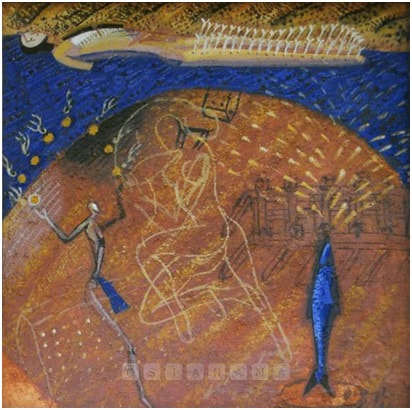
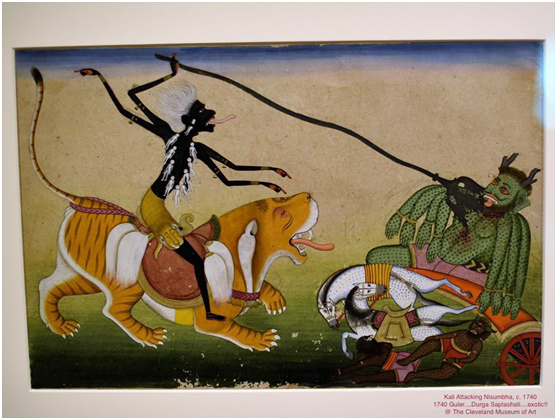
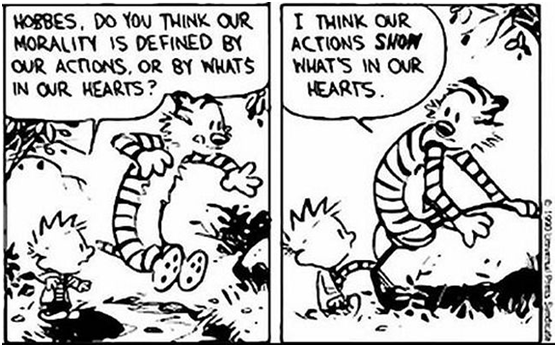
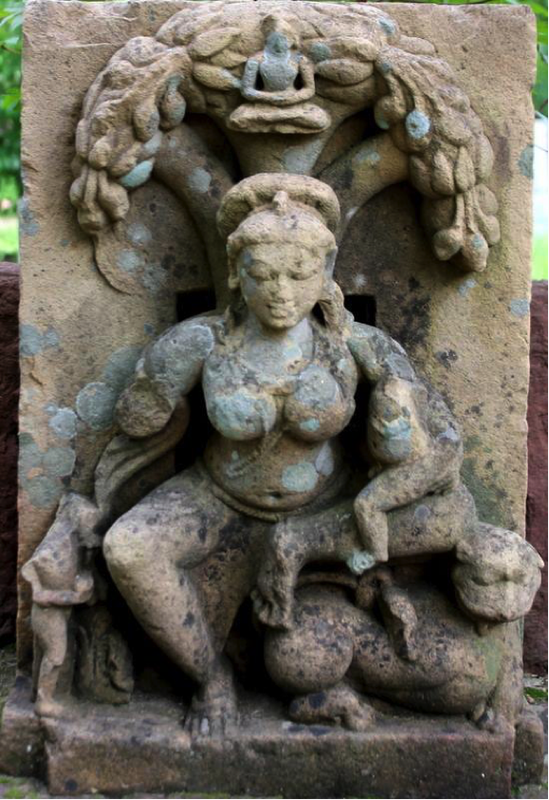
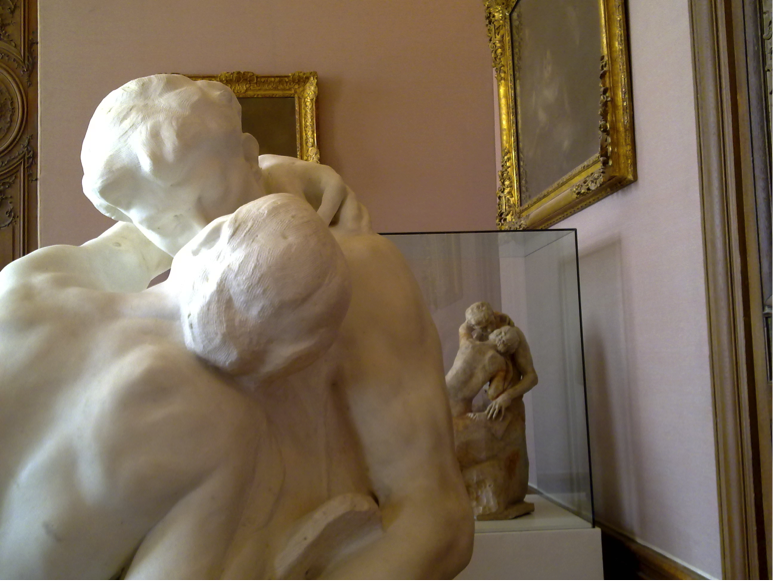
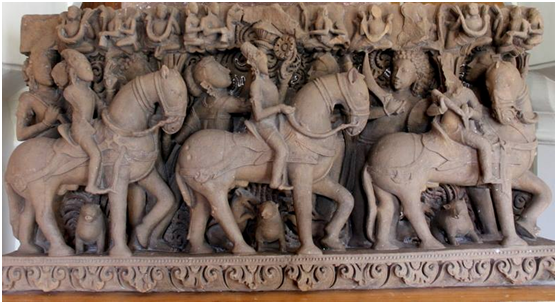
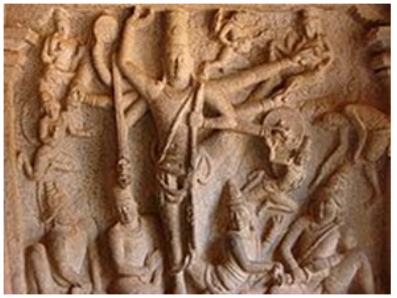
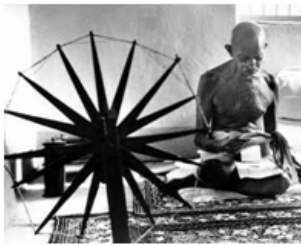
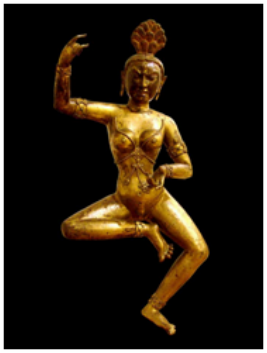
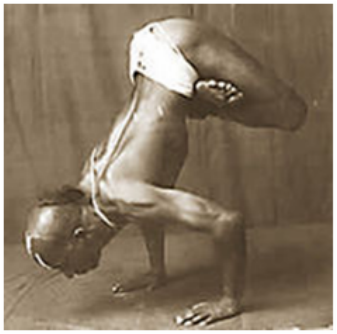
 RSS Feed
RSS Feed
